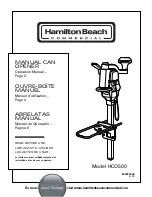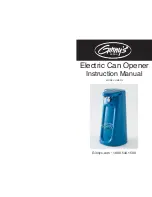
12
DOOR Series -
English
TERMINAL BOARD M5 (16 – 17 – 18)
16 = 0 output
QV QW QX
QRv
P QRv RTv
17 =
12V a.c. max 700mA output - Visualized by led DL4 (12V).
18 =
24V a.c. max 400mA output - Visualized by led DL5 (24V).
Power supply for external devices (radar, photocells, etc.)
In case of power failure, no voltage will be present on these terminals.
EARNING: If you need the radar sensors or external photocells to be operational even in the
BATTERY work mode, draw the power supply for the sensors from terminal board M1 between
terminals 1 (+12V) and 3 (0). Maximum current 250mA.
TERMINAL BOARD
M6 (F – N –
)
Mains power supply
F =
230V a.c. – 50-60Hz input
PHASE
RSPv
f
n
N =
230V a.c. – 50-60Hz input
NEUTRAL
=
GROUND; connect the ground conductor to the faston located on the control unit’s metal
casing
.
- Provide the mains with an omnipolar isolator with contact opening distance of at least 3mm.
- The power supply line must be protected against short circuit and ground leakage.
- Separate the 230V~ power supply line of the control unit from the very low voltage line of the
control and safety accessories.
12_ DOORFOTO1 PHOTOCELL CARD
12.1_ INSERTING THE CARD IN THE CONNECTOR LOCATED ON THE MOTHERBOARD
Insert the photocell card in the appropriate connector on the motherboard (J3).
12.2_ HOW TO DISTINGUISH THE TRANSMITTER CAPSULES FROM THE RECEIVER ONES
Each pair of photocells consists of a receiver capsule and a transmitter capsule, plus a cable equipped with mini connector for quick
and easy replacement.
The receiver capsules are square in shape
on the side where the connection cable comes out, while the
transmitter capsules are round
.
An 11-mm diameter hole
is required for both, in order to fasten them to the door frame. The cables
are marked TX (for the transmitters) and RX (for the receivers) at both ends.
RECEIVER
TRANSMITTE
R
12.3_ SELECTING THE NUMBER OF PHOTOCELL PAIRS UTILIZED
The photocell card can handle up to 3 pairs of photocells with incorporated self-diagnostic function, including 2 pairs (FT1 /FR1 and
FT2/FR2) for closing safety, while the third pair (FT3/FR3) can be set to one of the following functions using
switches 5
and
8
of DIP S2
(see TABLE 2): closing safety photocell, door crash sensor if a crash panic system is used (in this case the power supply to the motor
is disconnected) or as an opening mode input. The self-diagnostic function makes it necessary to set the number of photocell pairs that
are actually used in the system. The selected number of pairs is signalled through the SW1 dip located on the photocell card (see TABLE
1). Ths first couple of photocells ft1/fr1 has to be installed 1 mt above the ground level; the second couple of photocells (recommended)
ft2/fr2 at 50 cm above the ground level (please see the diagram below).
TABLE 1
TABLE 2
SW1 dip on DOORFOTO 1 photocell card
S2 dip on electronic control unit
1
2
5
8
OFF OFF
Only FT1/FR1 is active
OFF OFF
DOORFOTO1
photocell card absent!!
ON OFF
Only FT1/FR1 - FT2/FR2 are
active
ON OFF
DOORFOTO1
card present,
FT3/FR3 = door crash sensor
OFF ON
Only FT1/FR1 - FT3/FR3 are
active
OFF ON
DOORFOTO1
card present,
FT3/FR3 = safe closing manoeuvre
ON
ON
All pairs are active
ON
ON
DOORFOTO1
card present,
FT3/FR3 = open command
PHOTOCELL REFERENCE HEIGHTS
RX1
TX1
RX2
TX2
10
0
0
m
m
50
0
m
m













































